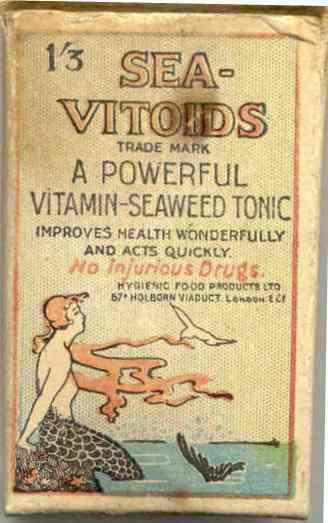Sea-Vitoids

1926-1932
This box would have contained vitamin tablets called Sea-Vitoids which were sold between 1926 and 1932, during the so called ‘Golden Age’ of vitamin discovery.
The tablets were claimed to 'improve the complexion by clarifying the blood' and contained Fucus Vesiculosus, a seaweed often used in dietary supplements for its naturally occurring iodine.
The tablets were also promoted as 'wonderfully soothing and act quickly whenever you feel liverish, nervous, irritated, depressed, headachy, out-of-sorts, languid, indigestion, heartburn, wind, gastritis, pains and aches'.